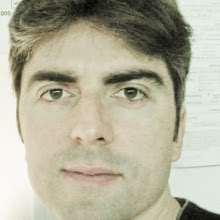I was listening to this old interview with Richard Feynman and it occurred to me how architects also present themselves as experts on something that is ultimately a subjective form of practice.
Architecture is not a pseudoscience, but it is not a science either. Architectural design relies on a subjective process of discovery that seeks to establish a structured construction of ideas; a sense of logic. We are required to provide solutions that are demonstratable, in one way or another, and so it is that we often find ourselves facing an ambiguous paradox. Because our whims are not recognized as a respectable foundation for a design we perform to our best ability as credible professionals, as we try to sustain some kind of scientific argumentation upon which we can assemble our ideas.
But how is it that we can establish logic from subjectivity. Yes, we collect data, we experiment with theoretical hypothesis, we ponder over the consequences, but in the end there are no deterministic laws that induce a specific solution or design. What drives us from A to B is a very subjective process we’ve come to know as creativity.
Maybe we can understand this better if we take note of what António Damásio wrote on his essay Descartes’ Error: Emotion, Reason, and the Human Brain. He demonstrates that the absence of emotion in fact compromises the decision process, the human capacity of being rational. Maybe we can say, in very simple terms, that we need our subjectivity to be objective. It is through subjectivity that we are able to establish priorities and make sense of what is relevant and important.
It’s interesting how contemporary architecture has developed processes, like programmatic strategizing and creative diagramming, in the attempt to nurture a more solid foundation for its practice. To become more scientific, perhaps? But the truth is we rely on certain ideas we accept as valid by default. We hardly question what we already know, but how is it that we know what we know? Take sustainability, for example, and how it has so often become an aesthetic discourse. Green roofs, rotatable buildings, vertical farms; concepts seldom questioned on quantifiable terms. In urbanism these flaws are even more dramatic. We understand that lower densities will determine greater energy costs, and higher densities will result in more complex social realities. Some people say that taller housing buildings can be directly associated with certain forms of criminal behavior, resulting in higher crime rates. Maybe it’s true, maybe it isn’t. But again, we’ve hardly established any demonstratable laws to quantify these realities, and still we are expected to develop accurate solutions that take these problems into consideration.
The truth is that we elaborate upon a painstaking process of trial and error. And we have large margins for error. Paraphrasing Feynman’s own words: I don’t know the world very well. That, my friends, is not humility. Just a scientific mind at work.
![[a barriga de um arquitecto]](http://2.bp.blogspot.com/-doCk6vK2R5k/WfbuRd0sCMI/AAAAAAAAFq0/2LEik04kW2kG9S6g9GIwWPz5gWetGVEhQCK4BGAYYCw/s1600/bA_LOGO_MOCHA_2016_650.jpg)
